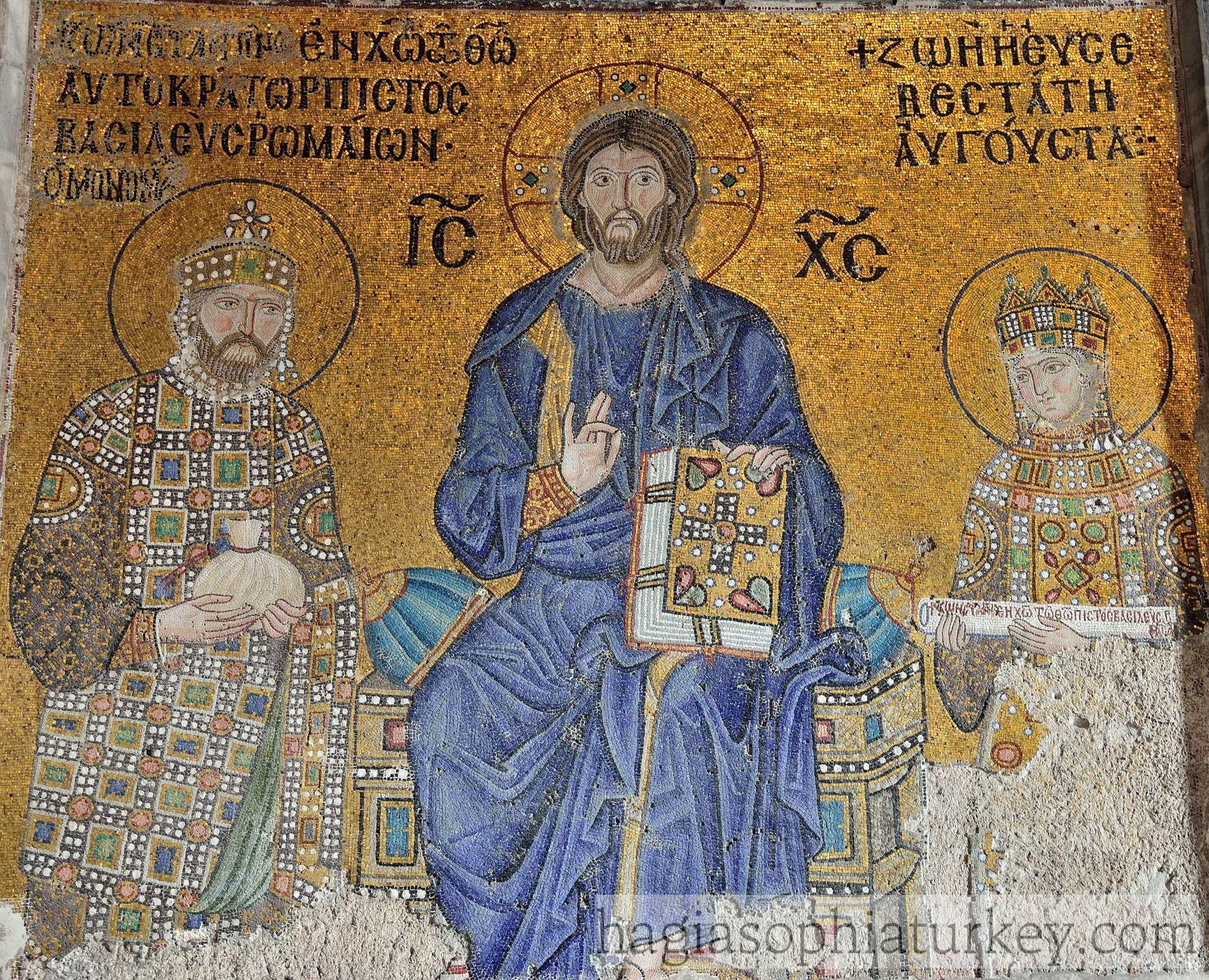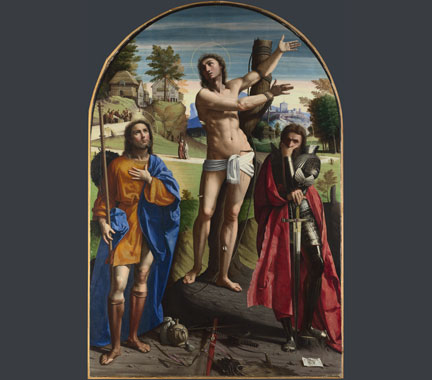The servants of the Three Kings don't appear at all interested in the Nativity. It's as if they are saying, "Did we travel so far just for this?" The ox and the ass are far more attentive!
.
History, political ideas, memories, stories and poems
The servants of the Three Kings don't appear at all interested in the Nativity. It's as if they are saying, "Did we travel so far just for this?" The ox and the ass are far more attentive!
.
Blogs
They followed each others' blogs and social media entries, though they had never met and did not even correspond directly. Their works were completely different: he wrote little stories, fantasies for the most part, whereas she wrote about the small incidents of her daily life, in a wry and amusing fashion. He deduced from these that she was a university graduate, young and unmarried, who worked in a college library where there were plenty of old books. She had no idea who he might be, or how old he was.
Because of this lack of contact, they built up imaginary pictures of each other. She saw him as a would-be warrior against the forces of darkness; he saw her engaged in a quiet but unsuccessful search for love. And both were right.History
The church was traditionally said to have been founded by King Edgar the Peaceful, around 960, but may be even older. In the mid-12th century, the old Saxon church was demolished and a new one was built, in cruciform shape. The side aisles were added at the start of the 13the century, with the earlier walls being replaced with round Romanesque arches. At the same time, the chancel was extended and the west tower and the south porch added. The church attained its present form in the later 15th century.
In 1071 William the Conquerer granted Shrewsbury and most of the surrounding lands to Roger de Montgomery,who built the castle and founded an abbey. Shrewsbury was already a significant town by the time of the Domesday Book, 1086.
In 1215,in the chaos that marked the end of King John's reign, Shrewsbury was seized by the Welsh prince Llewellyn ap Ioreth, who continued to cause great destruction until the town was regained by Henry III in 1234.
St. Mary's became a "Royal Peculiar", under the direct jurisdiction of the Crown rather than the local Bishop, This only ceased under George III. It was a "collegiate church", served by Canon Priests under a Dean.
The church ceased to hold regualr services in 1987, and is now cared for by the Churches Conservation Trust.
The south porch,dating from around 1200, has a fine Norman arch.
There is a small Norman door on the north side, now bricked up.
The lower part of the west tower, in red sandstone,is late Norman; the upper part is Perpendicular. The spire, at 138 feet, is one of the tallest in England. The top collapse in 1894 and fell through the roof. Some people saw the disaster as God's punishment for the spread of evolutionary ideas by Charles Darwin: a Shrewsbury man!
Outside the west door is a memorial to Robert Cadman,who in 1794 attempted to slide headfirst down a rope stretched from the belfry to the far bank of the River Severn. The rope snapped and he was killed!
The nave; looking east
The chancel arch dates from the start of the 13th century. There would once have been a rood screen, which was destroyed in the Reformation, and the sone altar was removed in 1584 as "idolatrous". The chancel is dominated by the magnificent Jesse window (see later). The magnificent "Angel" ceiling dates from the late 15th century: it was smashed when the spire collapsed but, amazingly, was rebuilt using the original wood. The twin small arches are a Victorian addition to allow extra light.
Romanesque columns line the nave.
Stained Glass
Any stained glass in the church was destroyed in the 16th or 17th centuries, and only a few fragments remain. The magnificent stained glass windows in St. Mary's were all brought from elsewhere.
The chancel is dominated by a magnificent Jesse window.
It was made in the 14th century at the behest of a local knight, Sir John de Charleton, who is commemorated in the bottom row, probably for a Franciscan friary that stood on the other side of the Severn. When this was dissolved in the Reformation, the window was taken to Old St. Chad's church in the town, and then reinstalled in its present position when that church collapsed in 1788.
The Trinity Chapel, to the south of the chancel, has a tomb efficy of Sir Simon de Leybourne, who died around 1308. His crossed legs should indicate that he was a crusader, though the crusades had all but finished by his lifetime.
The windows in the north aisle date from 1479, and come from Trier cathedral in Germany. The windows contain a variety of disconnected votive scenes of donors and saints.
The stained glass windows on the south side were again purchsed by William Rowland. Saint Bernard and a number of other saints are featured.
Populism is a term much used, but seldom defined. It is generally used as a word of abuse, giving rise to the comment by the old cynic P. J. O'Rourke: "Populism is an epithetic catch-all whenever the ideas popular with the good and the great aren't popular". It is a term generally linked with the political Right, in opposition to what is alleged to be the ruling elite. In this essay I would like to compare and contrast populism with the traditional anti-elite ideology; Marxism.
Both populism and Marxism stress the unfairness of the present status quo, Both maintain that society is controlled by an elite that ignores the interests of the mass of the people though Marxism lays far more stress on the economic aspects. Both aim their appeal at classes and groups who feel themselves to be excluded and exploited. Both appeal to the traditional working classes for support, but populists also target the "petty-bougeoisie" (the self-employed, shopkeepers and lower-grade clerical workers) and the farmers: large groups which the Marxists despise or ignore.
Populists stress patriotism and nationalism, which may merge into racism. Marxists ignore, or even denounce, patriotism and nationalism; though when Marxism became identified with the Russian state, patriotism and nationalism returned with a vengeance. In Britain and the USA, people on the Left are more likely to apologise for their nation's history than glory in it as a Populist would do. Populists therefore accuse their opponents of being unpatriotic.
Marxists look forward to a Utopian future of freedom and prosperity for all after the revolution. Populists, by contrast, generally look backward to a supposedly golden past, from which the nation has declined. Thus, Donald Trump's campaign slogan, "Make America great again!" necesarily implies that America has ceased to be great. In Britain, the Brexiteers have always maintained that we were better off before we joined what was then the Common Market.
Marxism has always had a certain appeal to intellectuals, but populists profess to despise intellectualism. In the words of Michael Gove during the Brexit debate: "The country has had enough of experts". It was not made clear whose advice he would be taking instead.
Populists strongly support traditional cultural values, whereas Marxists (when in opposition) are more likely to favour the artistic avant-gard
Both Marxists and Populists denounce their enemies, whom they allege hold a dominating, malevolent and sinister hold over society. For Marxists, the enemies are economic ones: capitalists, financiers and big business. The enemies invoked by the Populists are more nebulous: a liberal elite who are imposing their politically-correct views on society, crushing free speech and depriving people of their fun. It is suggested that the actual political leaders are either willing accomplices or hopeless dupes. When asked to supply actual names in this sinister group, neither Marxists nor Populists can produce a very convincing list. The major difference is that Populists are likely to name among their enemies foreigners and those of alien race or culture inside the country. Marxists would not do this.
When I began to consider this contrast, it occurred to me that Marxists, when established in power in countries such as the old Soviet Union, quickly adopt many Populist attitudes; particularly nationalism and dislike of alien ideas. They accuse their internal enemies of lack of patriotism, are deeply suspicious of independent intellectualism. They ridicule the cultural avant-gard, which they criticise as being remote from ordinary people, and are generally traditional and philistine in their artistic tastes. This is where Marxism and Populism come together.


